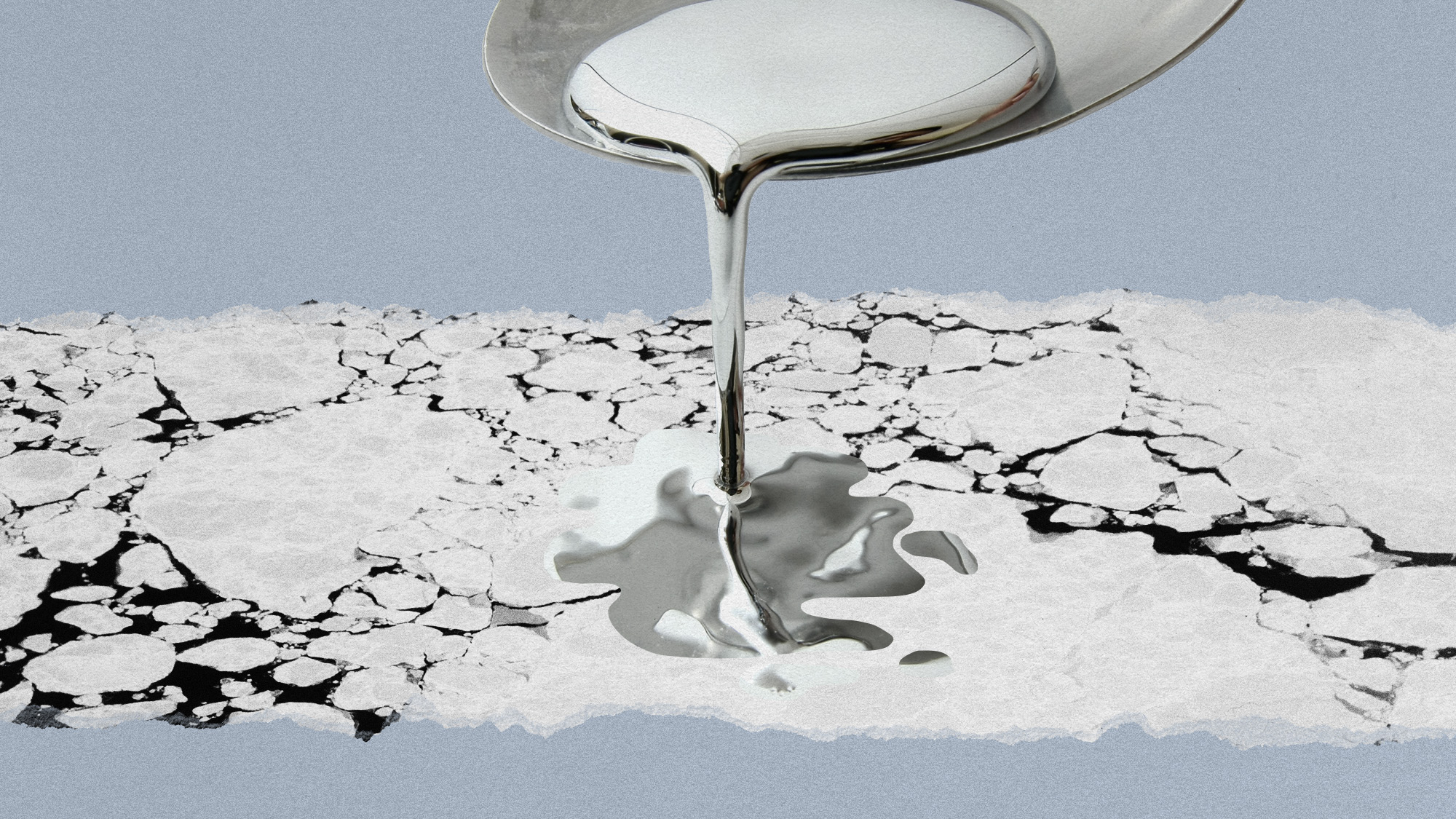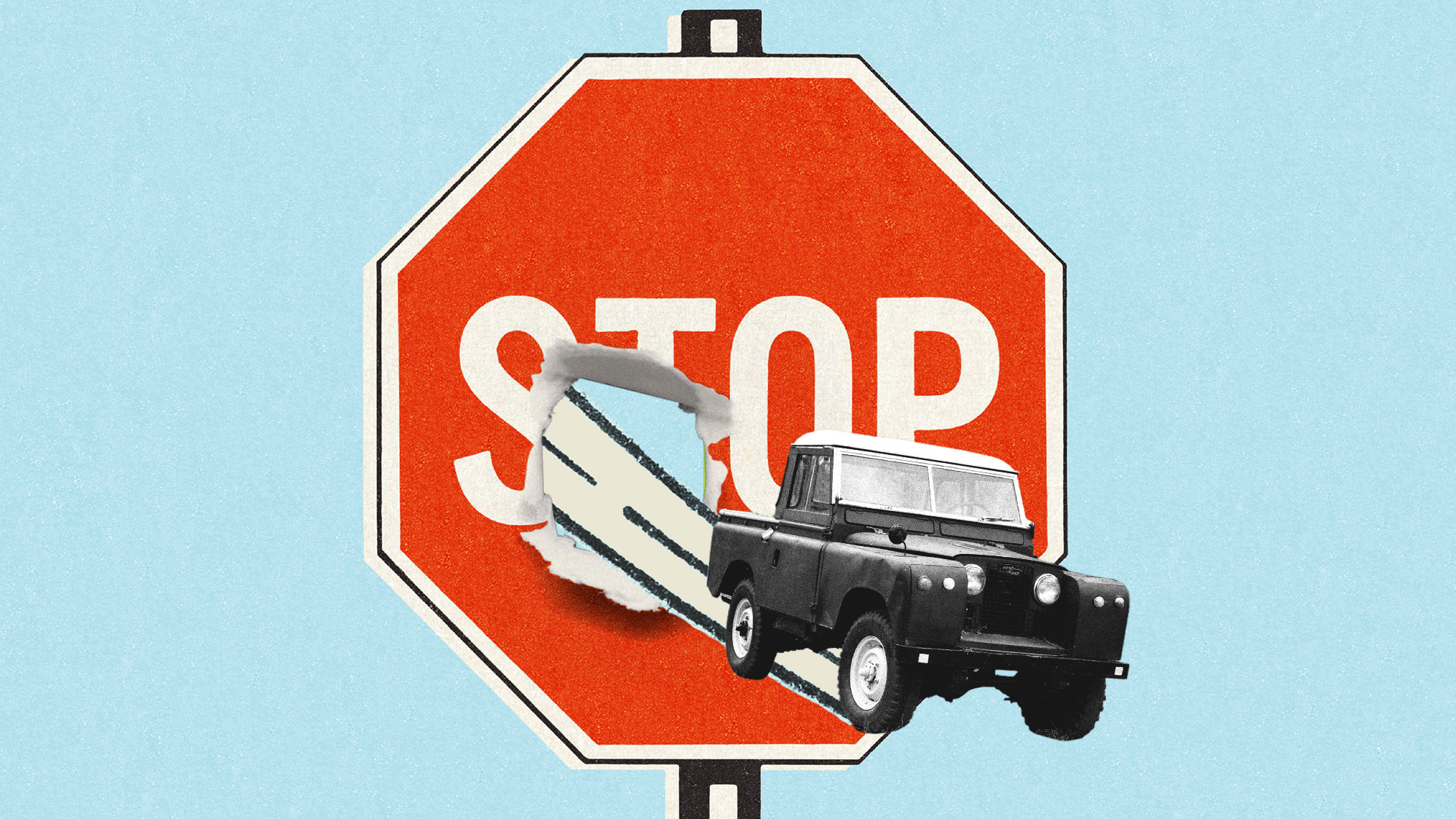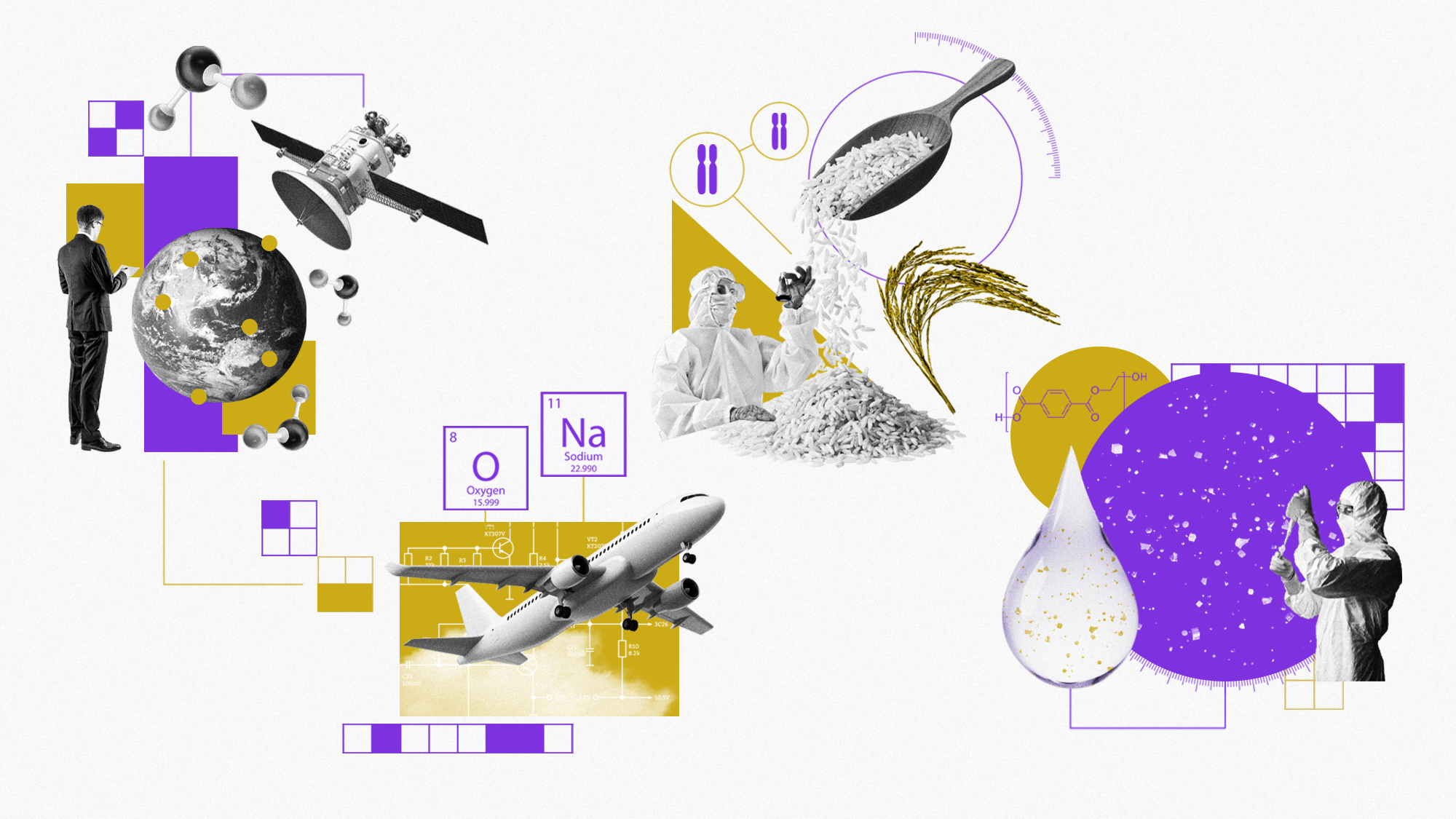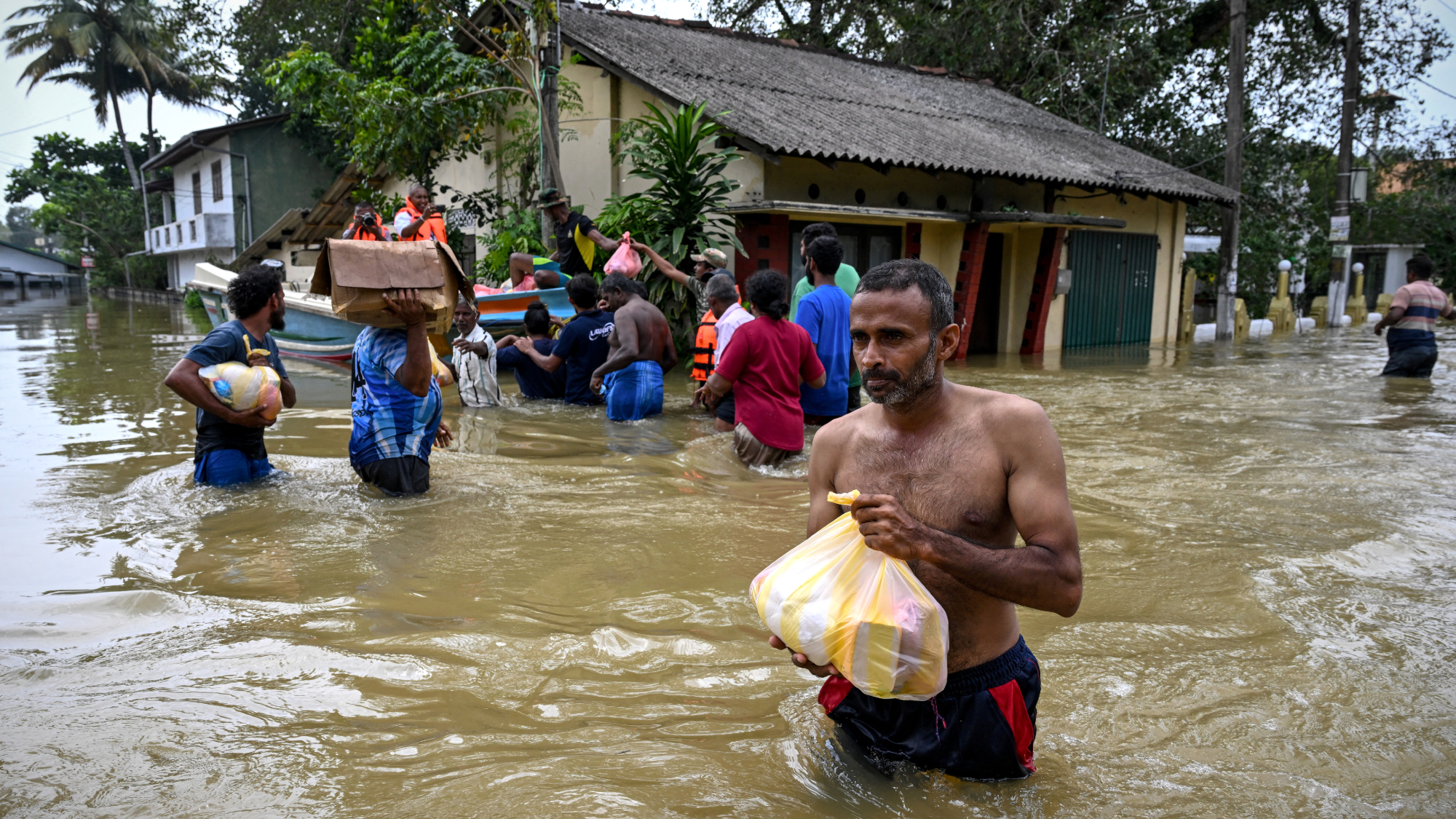The Arctic is a ticking 'mercury bomb'
An icy prison break is on the way


An influx of silver liquid might be in our future. The Arctic has kept centuries of mercury deposits locked away, but global warming is threatening to release that stock into the environment. Mercury can be toxic and cause severe health consequences in high concentrations. Melting permafrost could also lead to other ecological consequences that threaten humans and the ecosystem.
Unfreezing mercury
The Arctic is covered in permafrost, a large icy expanse that, as the name suggests, remains permanently frozen. Well, that was the case until recently. Climate change has caused record-warm temperatures which have been slowly thawing the permafrost. Within the icy reserves lies an abundance of mercury ready to be released. That release could have negative health and environmental effects, according to a study published in the journal Environmental Research Letters. "There could be this giant mercury bomb in the Arctic waiting to explode," study co-author Josh Wes said in a statement.
Mercury has been trapped in the Arctic for thousands of years. Natural air currents pick up atmospheric mercury and push it toward the Arctic "where it is absorbed by plants, which then deposit the toxin in the soil," said Yale Environment 360. "Over centuries, mercury has built up in the frozen ground, such that today, Arctic permafrost may hold more mercury than the atmosphere, the oceans and every living organism combined." The mercury content of the Arctic has especially increased over the past 500 years as a result of industrialization. While permafrost covers 25% of the Arctic, certain areas are at risk of the permafrost completely disappearing by 2050.
The Week
Escape your echo chamber. Get the facts behind the news, plus analysis from multiple perspectives.

Sign up for The Week's Free Newsletters
From our morning news briefing to a weekly Good News Newsletter, get the best of The Week delivered directly to your inbox.
From our morning news briefing to a weekly Good News Newsletter, get the best of The Week delivered directly to your inbox.
To determine the mercury risk, researchers took deeper cores of permafrost than previously extracted. "Scientists analyzed mercury in sediments collected from riverbanks and sandbars which allowed them to tap into deeper soil layers," said The Independent. "This method offers a more accurate picture of how much mercury is being released and how much more could yet escape as the Arctic permafrost continues to melt." The findings showed higher mercury estimates than previous studies.
Long term damage
Mercury is a toxic metal that poses a threat to both humans and other wildlife. "Mercury builds up in the food chain over time, and continued exposure, even at low levels, can have serious health consequences," said The Independent. "For communities that rely heavily on fishing and hunting, this could mean a slow but steady increase in mercury levels in their diet." In high quantities, there is a risk of mercury poisoning which can cause coughing, nausea, seizures and even brain damage in extreme cases. The good news is that mercury poisoning is not necessarily an immediate threat. Mercury takes time to accumulate in the food chain, and the risk from drinking water is minimal. In addition, "some of the mercury unleashed by permafrost is being buried in river sediment, though it's not clear how much is being locked away," said Yale Environment 360.
The heavy metal is not the only consequence of melting permafrost. The icy prison also contains significant amounts of carbon dioxide, as well as pathogens that could be released as it thaws. "For millennia, the Arctic has been locking away toxic metals and keeping the planet healthy and happy," said Popular Mechanics. "But after two centuries of an unyielding fossil fuel addiction, this particular environmental bill might soon be coming due."
A free daily email with the biggest news stories of the day – and the best features from TheWeek.com
Devika Rao has worked as a staff writer at The Week since 2022, covering science, the environment, climate and business. She previously worked as a policy associate for a nonprofit organization advocating for environmental action from a business perspective.
-
 Zimbabwe’s driving crisis
Zimbabwe’s driving crisisUnder the Radar Southern African nation is experiencing a ‘public health disaster’ with one of the highest road fatality rates in the world
-
 The Mint’s 250th anniversary coins face a whitewashing controversy
The Mint’s 250th anniversary coins face a whitewashing controversyThe Explainer The designs omitted several notable moments for civil rights and women’s rights
-
 ‘If regulators nix the rail merger, supply chain inefficiency will persist’
‘If regulators nix the rail merger, supply chain inefficiency will persist’Instant Opinion Opinion, comment and editorials of the day
-
 ‘Jumping genes’: how polar bears are rewiring their DNA to survive the warming Arctic
‘Jumping genes’: how polar bears are rewiring their DNA to survive the warming ArcticUnder the radar The species is adapting to warmer temperatures
-
 Environment breakthroughs of 2025
Environment breakthroughs of 2025In Depth Progress was made this year on carbon dioxide tracking, food waste upcycling, sodium batteries, microplastic monitoring and green concrete
-
 Crest falling: Mount Rainier and 4 other mountains are losing height
Crest falling: Mount Rainier and 4 other mountains are losing heightUnder the radar Its peak elevation is approximately 20 feet lower than it once was
-
 Death toll from Southeast Asia storms tops 1,000
Death toll from Southeast Asia storms tops 1,000speed read Catastrophic floods and landslides have struck Sri Lanka, Indonesia, Thailand and Malaysia
-
 Can for-profit geoengineering put a pause on climate change?
Can for-profit geoengineering put a pause on climate change?In the Spotlight Stardust Solutions wants to dim the sun. Scientists are worried.
-
 How will climate change affect the UK?
How will climate change affect the UK?The Explainer Met Office projections show the UK getting substantially warmer and wetter – with more extreme weather events
-
 Can the UK do more on climate change?
Can the UK do more on climate change?Today's Big Question Labour has shown leadership in the face of fraying international consensus, but must show the public their green mission is ‘a net benefit, not a net cost’
-
 Did Cop30 fulfil its promise to Indigenous Brazilians?
Did Cop30 fulfil its promise to Indigenous Brazilians?Today’s Big Question Brazilian president approves 10 new protected territories, following ‘unprecedented’ Indigenous presence at conference, both as delegates and protesters
